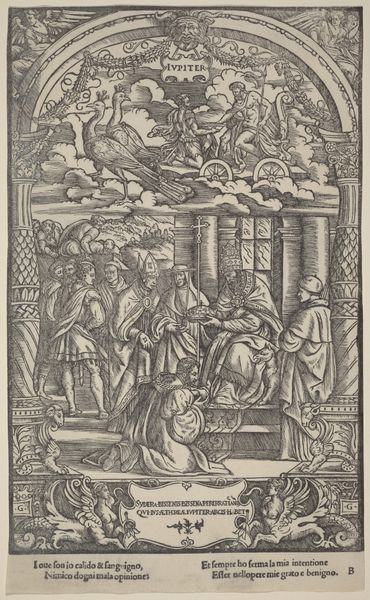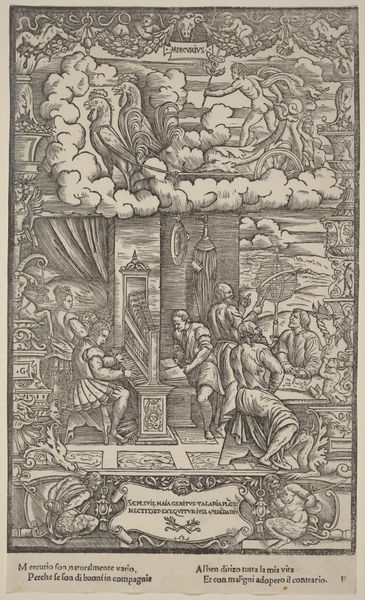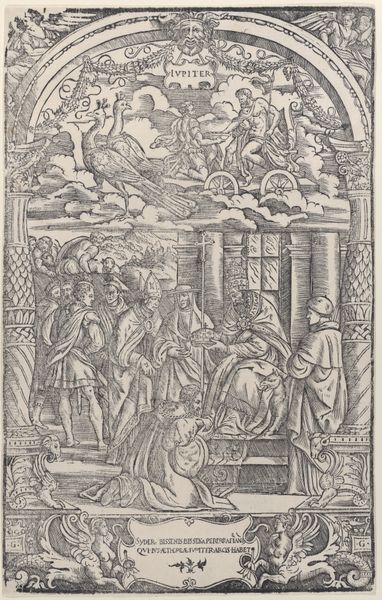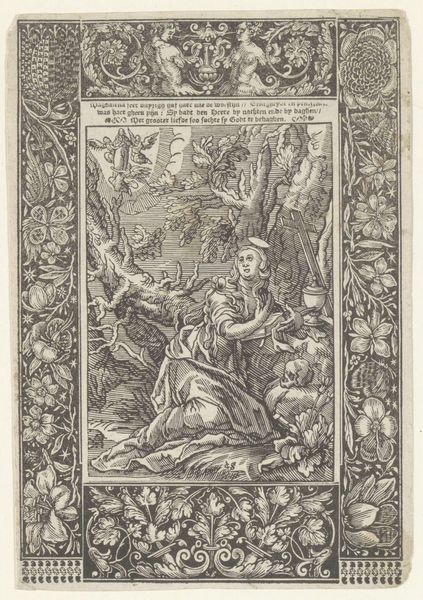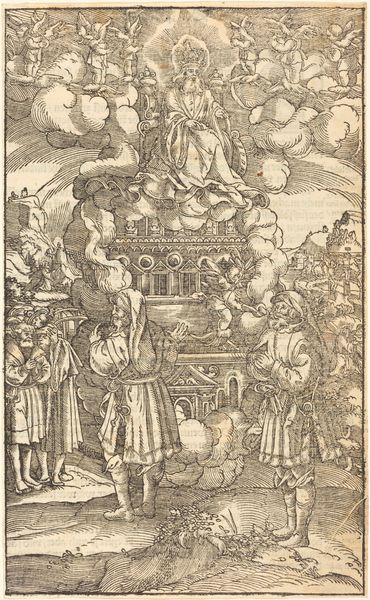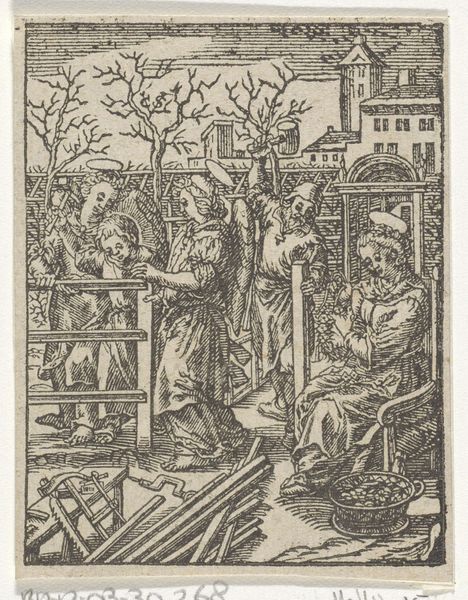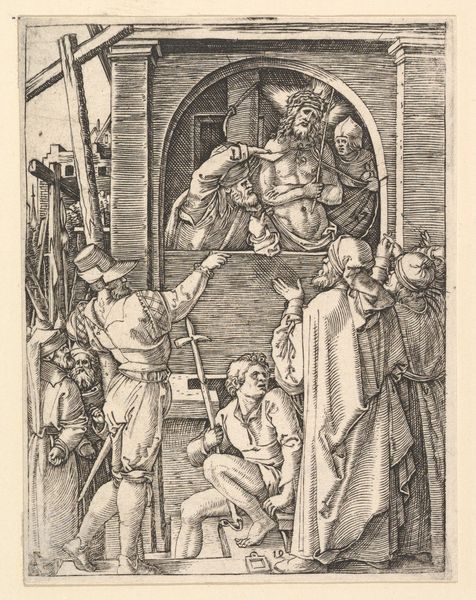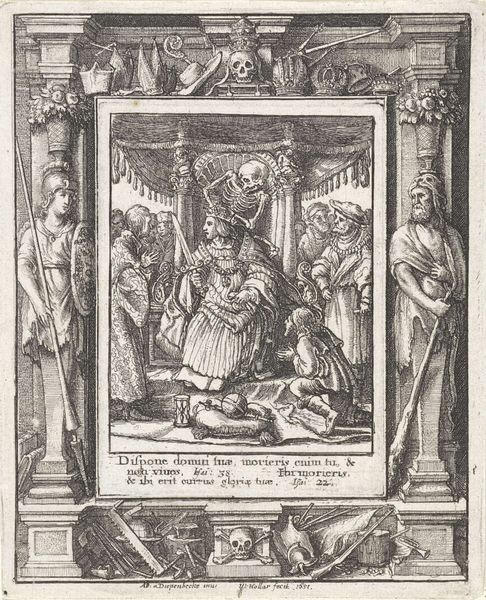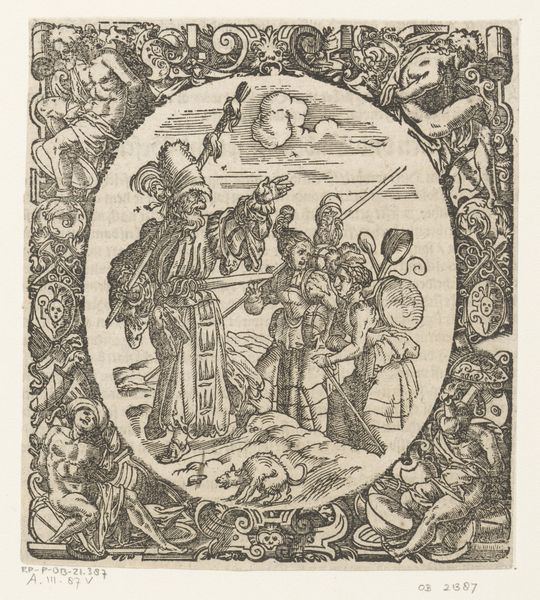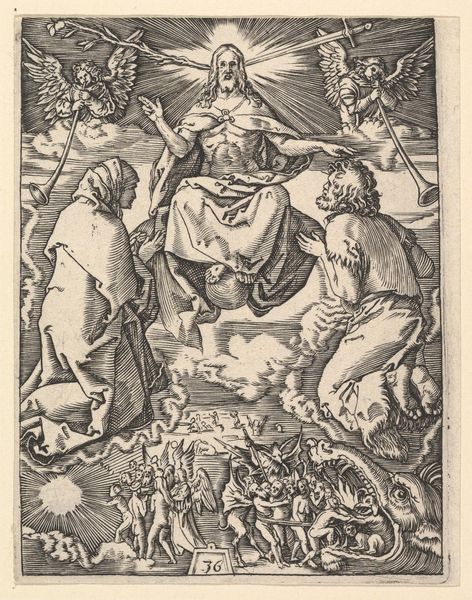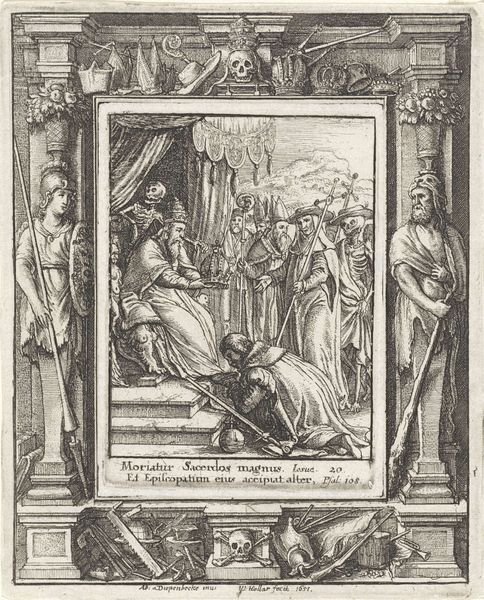
Saint Jerome in Penitence, in a Renaissance Frame 1500 - 1538
0:00
0:00
drawing, print, woodcut, engraving
#
portrait
#
drawing
#
narrative-art
#
pen drawing
# print
#
pen illustration
#
pen sketch
#
landscape
#
figuration
#
woodcut
#
line
#
history-painting
#
northern-renaissance
#
engraving
Dimensions: Sheet: 4 3/16 × 3 in. (10.7 × 7.6 cm)
Copyright: Public Domain
Curator: So, here we have Albrect Altdorfer’s “Saint Jerome in Penitence, in a Renaissance Frame”, probably made sometime between 1500 and 1538. It’s a woodcut piece currently housed here at the Met. My first impression is this feels like a dream. Melancholy, yes, but like a vivid dream. Editor: It certainly has that quality – like something half-remembered. But look at how meticulously carved the frame is – it feels as important as the central image, maybe even more so. It really grounds the whole piece in material terms. The artist shows his awareness of tools, labor, market through the integration of what should be merely decorative. Curator: That frame *is* extraordinary, almost aggressively ornate. It's a world unto itself, a gilded cage perhaps. I love how it contrasts with the raw, almost primitive energy of Jerome in his wilderness. Look at him kneeling, clutching his skull, and his lion napping! Editor: Yes, the lion is very interesting—notice how Altdorfer has positioned it not as a symbol of majesty, but almost like a discarded material, blending into the rugged background as any other animal would do. That texture is quite deliberate, turning the allegorical content into plain matter of fact. Curator: True, there’s very little grandeur on display; Saint Jerome is traditionally depicted as powerful. This one is humbled, almost… vulnerable. It feels deeply personal, as if Altdorfer is grappling with his own faith or mortality, you know? Editor: Perhaps. Or maybe Altdorfer wants us to focus on how the image functions more than just interpret symbolic messages. The material fact that we see this printed on paper speaks to its reproducibility and the ability to move goods within a market, both holy and common. Curator: But wouldn’t the religious and historical themes be vital to interpreting it? I feel we are allowed to bring some spirituality in the discussion. Editor: Of course, themes always hold cultural meaning, but what truly fascinates me here is how the piece acts as commodity, both precious artwork and functional decor produced for the glory of a patron. That blend really fascinates me and shows an interesting historical tension at work. Curator: Hmmm… yes, but at the end it goes much further. When I step back I think that Altdorfer managed to craft an artwork that is more a symbol of yearning than the assertion of any certain material force, the image prevails, no doubt. Editor: Perhaps we will just need more materials to arrive at a complete view!
Comments
No comments
Be the first to comment and join the conversation on the ultimate creative platform.
